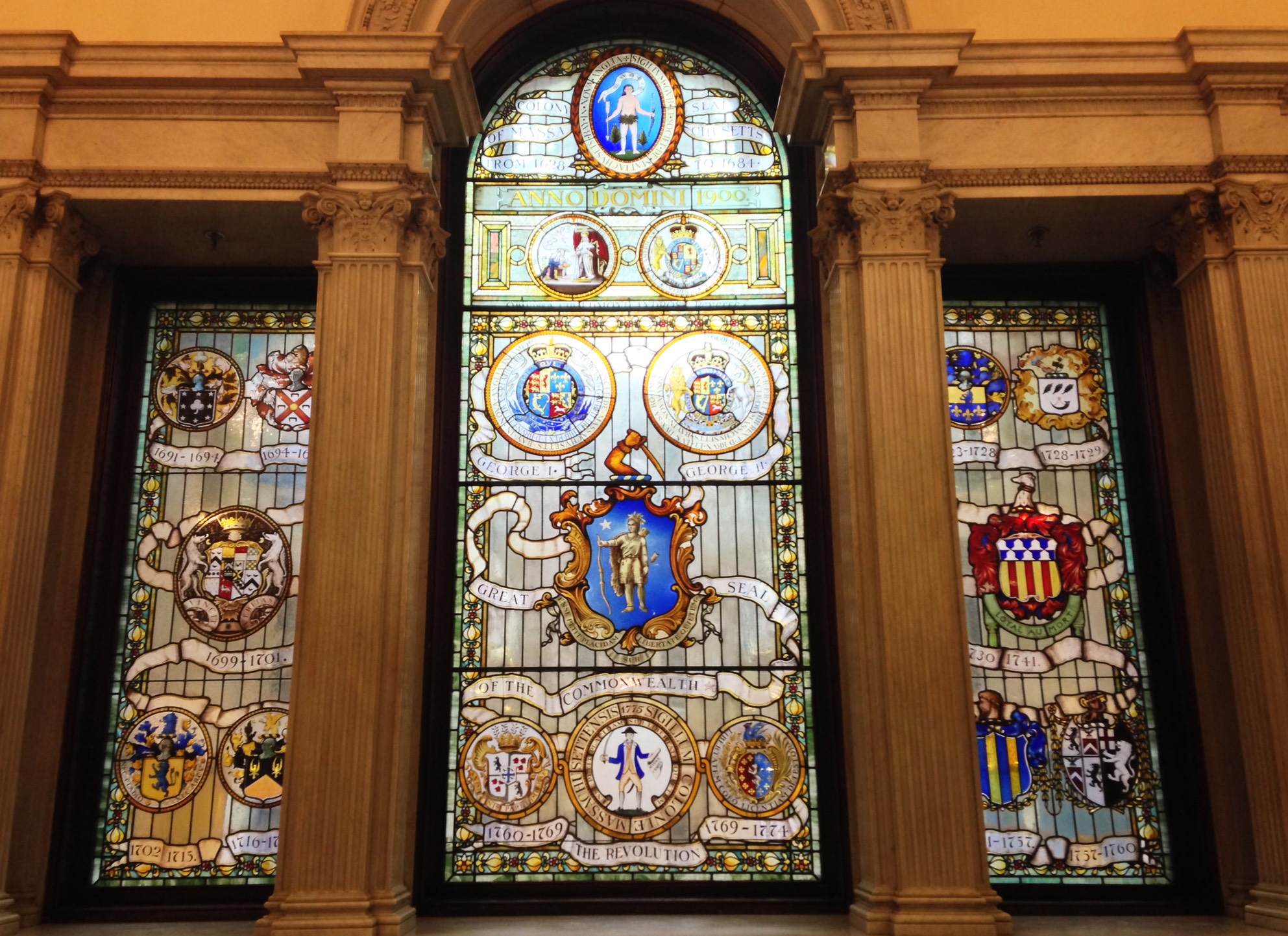
Audio Transcript
Stop 7. Staircase and Stained Glass Window. Just ahead is the grand staircase, which leads to the third floor. After the iron railings on the grand staircase were cast, the mold were broken to ensure that the railings would be one of a kind. At the top of the stairs, you will find a stained glass window containing the many seals that have represented Massachusetts since its settlement.
Massachusetts has had a series of state and colonial seals. The first is shown in the top center pane of the stained glass window designed in England for the original commercial enterprise that was the Massachusetts Bay Colony. The SEAL portrays unrealistically a Native American attired in a grass skirt, voicing the plea, Come over and help us. When Massachusetts became part of the Dominion of New England in 1684, a new seal shown below, the first was adopted.
The family seals of the provincial governors appear on the two side panels, and the seal used during the American Revolution is located at the bottom of the center window. This seal portrays a colonist clutching the Magna Carta in one hand and a sword in the other, and was used from 1775 to 1780. Our current state motto was adopted at that time and can be seen in Latin wrapped around the revolutionary seal.
Translated into English, it says by the sword We seek peace, but peace only under liberty. Massachusetts adopted its current seal in 1780. It appears just above the revolutionary seal. A more realistically dressed Native American is shown on a blue background. Standing below a drawn sword. The star over his shoulder indicates that Massachusetts is one of the original 13 colonies.
The motto of the Commonwealth appears at the bottom of the seal.